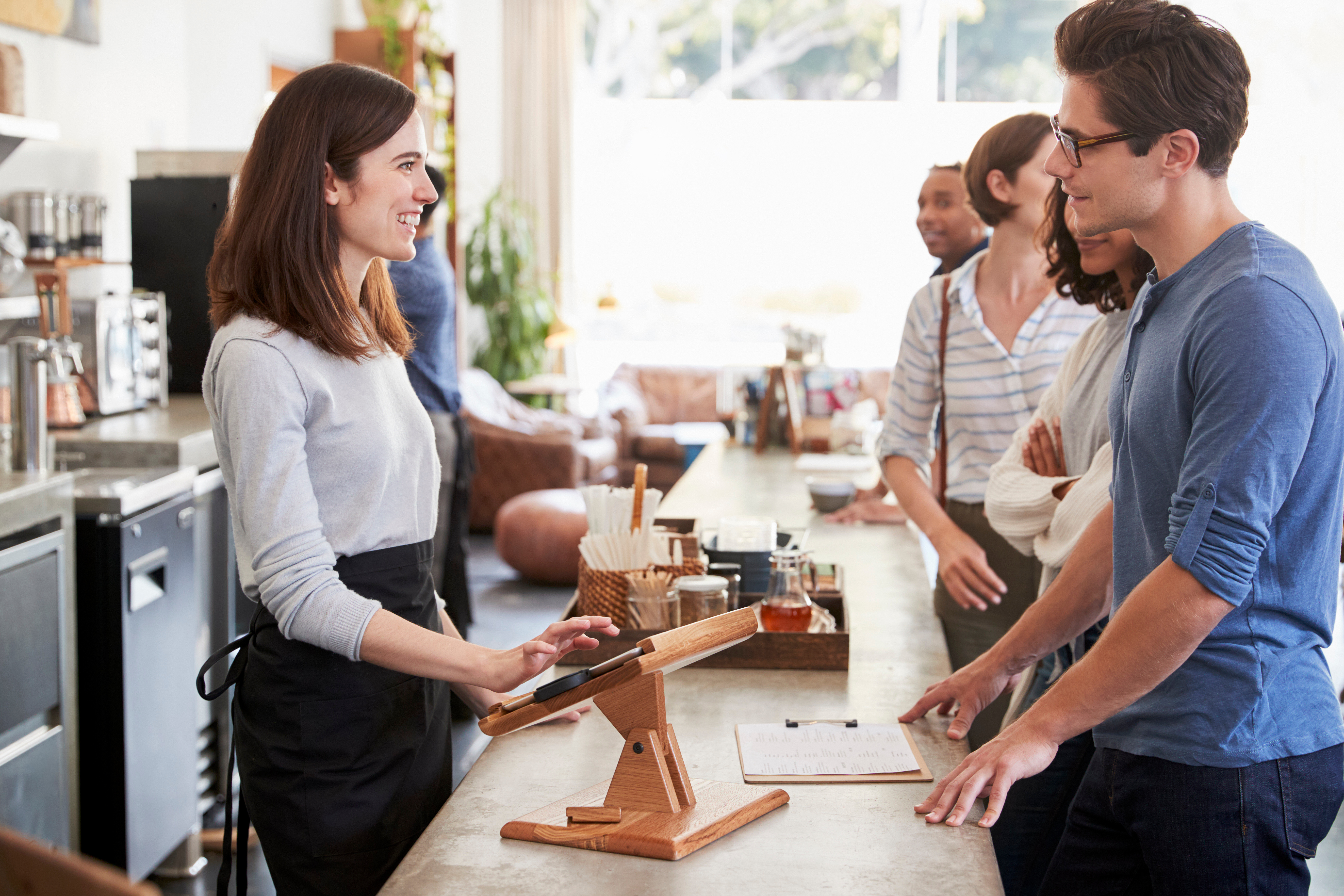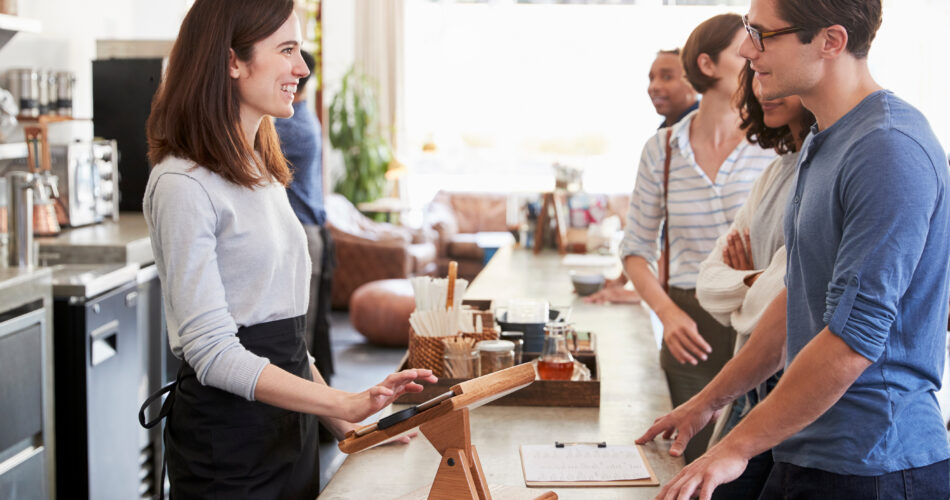
From coffee-making robots to AI-powered coffee blenders, the first few weeks of 2025 have been packed with exciting, tech-focused coffee shop trends.
And, given some of the tech-focused moves we’ve seen our favorite brands making…
We anticipate significant achievements from coffee shops throughout the remainder of this year. Here are Craver’s top five predictions for the coffee shop technology trends we’ll be seeing more of in 2025.
Trend 1: Coffee Shop Membership and Subscription Programs In 2023
The World Coffee Portal reported that 1/3 of customers would prefer paying for a subscription vs. per visit. In 2024, Blank Street Coffee’s four-month-old membership service reached (an almost unbelievable) 5,000 members.
Additionally, as the past few years have demonstrated, memberships and subscriptions work, even the smallest local coffee shops are jumping on board in 2025.
Take Springfield Wakery, for example.
The small, Illinois coffee shop launched their first-ever subscription service this year, announcing the big news in an Instagram post on January 8th.
The (aptly named) “Wakery Coffee Subscription” is a simple yet effective pre-pay subscription model, hosted on the coffee shop’s Square website. Simply select the number of coffees you want to pre-pay for, add the subscription to your shopping cart, and checkout as you would for any other online product to subscribe. You’re officially a Wakery Coffee subscriber.
And, to make the subscription even more worth it, The Wakery has implemented a “buy more, save more” pricing system; a feature they explained on Instagram as a true win-win.
Craver predicts that more coffee shops will try out a membership or subscription model in 2025, especially smaller coffee shops that feel empowered by simple, easy-to-use subscription models like The Wakery’s.
Trend 2: Digital menu boards for coffee shops are the second trend
Did you know that digital menu boards have the ability to boost sales by as much as 38%? They’ve also been shown to reduce perceived wait time by 35%+, increase margin-per-order by 3%+, and amplify employee productivity by 20%.
And if that doesn’t convince you of the potential of digital menu boards, maybe Socotra Coffee House will. The Yemeni coffee shop, which was founded in Ann Arbor and opened in August 2023, “[honors] the cultural traditions of Yemen by bringing them to a fresh new audience].”
However, co-founder Sam Al Rabeei made his own digital menu boards because he was aware that the shop needed a more contemporary look despite the brand’s focus on “traditional” coffee and pastries. “I just wanted something basic, something that people can see and is very neat,” said Al Rabeei. “I could have hired a company to do the signage and other things, but it’s very easy — you can use an HDMI or [USB] to connect to the TV, and then you just turn it on,” says the owner.
Fast forward to 2024, and Socotra Coffee House has continued its steady growth trajectory, connecting with the local community through partnerships, events, and online appearances.
With coffee shop owners like Al Rabeei demonstrating that in-house tech doesn’t have to be expensive or complicated, Craver predicts that more coffee shops will adopt simple, service-improving digital signage and menu boards in 2025.
Trend 3: Coffee Shop Delivery
Integrations For their annual “Online Ordering Trends” report in March 2024, DoorDash surveyed over 1,500 US consumers. The results were significantly more delivery-heavy than you might expect this far after the pandemic. According to DoorDash’s report, 7 in 10 respondents had ordered food delivery over the past month, with 33% saying their delivery habits had actually increased compared to the prior year.
Combine those figures with the 3 in 10 respondents naming third-party apps as their go-to for delivery, and it’s obvious why coffee shops are prioritizing better delivery integrations — especially when brands like Caffè Nero are proving that it works.
In Q1 2024, Caffè Nero reported a record-breaking 28% increase in delivery sales across UK markets, with the brand’s international stores reaching sales of 80M USD. And, by the time Q3 2024 rolled around, delivery had reached 2% of Caffè Nero’s total sales.
“I’m hugely encouraged by the group’s performance during the last financial year,” said Caffè Nero Founder and Group CEO, Gerry Ford. “We have returned to pre-[COVID] levels plus a bit more.”
Because of the increasing demand for at-home delivery — and the proof that delivery can and does ramp up sales — Craver predicts more coffee shop owners and operators will expand their delivery tech integrations in 2025.
Trend 4 : Better In-App Personalization for Coffee Shops
Achieving personalization levels customers expect can be difficult, especially since competing third-party apps have a data-driven upper hand.
Local coffee shop owners must approach personalization enhancements with a little more creative thinking—that is, without billions of people’s worth of data—in contrast to Uber Eats and DoorDash, which have access to massive amounts of data and predictive insights to guide their innovative personalization efforts.
However, this does not imply that it is “impossible,” as Dunkin’ Donuts demonstrates. The Dunkin’ App has skyrocketed in popularity since the introduction of the redesigned “Dunkin’ Rewards” program in 2022. It now has over 30 million active users and has introduced a whole new set of personalized features. So, did Dunkin’ have Uber Eats-level data guiding their new personalization?
Nope. They merely inquired about what people wanted. “When we set out to improve DD Perks, we asked our members what they wanted to see in a new program,” said Scott Murphy, Dunkin’ President and Head of Beverage-Snack. “They told us three things: flexibility, variety, and recognition, [and] we did just that.”
New personalization features delivered on all three promises, including:
Expanded rewards options, offering flexibility in how you redeem your points
Saved favorite orders, showing Dunkin’ recognized your go-to products
Boosted Status and badges, adding variety to how you get points
While first-party apps might not be able to “compete” with the amount of data third-party apps have access to, they can level up their personalization through Dunkin’-level communication with their audience — something Craver predicts to see much more of in 2025.
Trend 5 : More Accurate Mobile Order Pickup Times for Coffee Shops
75% of respondents to a recent CivicScience survey anticipate receiving their food and beverage orders within five minutes or less. It should come as no surprise that the importance of “timing” has skyrocketed in recent years. This is because of the need for speed, increasing errors in mobile order estimates, and prolonged wait times in stores. That’s why we’re seeing more and more coffee shop owners and operators share new plans and strategies to improve all things “timing” — including mega-brands like Starbucks.
In December last year, Starbucks CEO Brian Niccol shared that the brand’s updated 5-year goals included multiple timing-related improvements, most notably a revamp of the mobile order pickup process.
Niccol explained that the brand’s main focus for improving mobile order pickup is accuracy, with plans to give customers a more specific in-app estimate of when their order will be ready.
Niccol stated, “Today, we give you an estimate, “hey, it will be ready in three to five minutes.”” “In the future, what’ll happen is we’ll be like, ‘Rebecca, your drink will be ready at nine,’ instead of it just being made, sitting on the counter [and] waiting for people to come.”
With increasing consumer demand for fast, “wait-free” service, Craver predicts that more coffee shop owners and operators will follow Starbucks’ lead in 2025, reworking their mobile apps to deliver more accurate service estimates.
